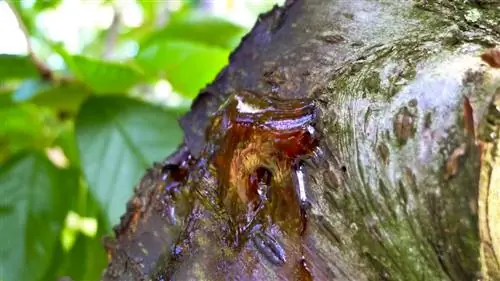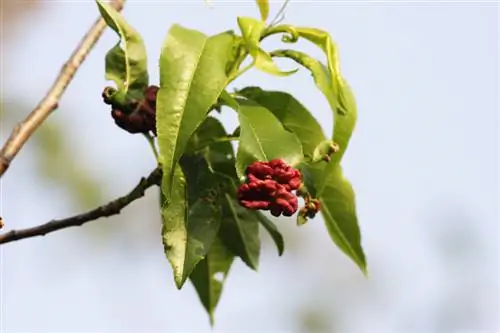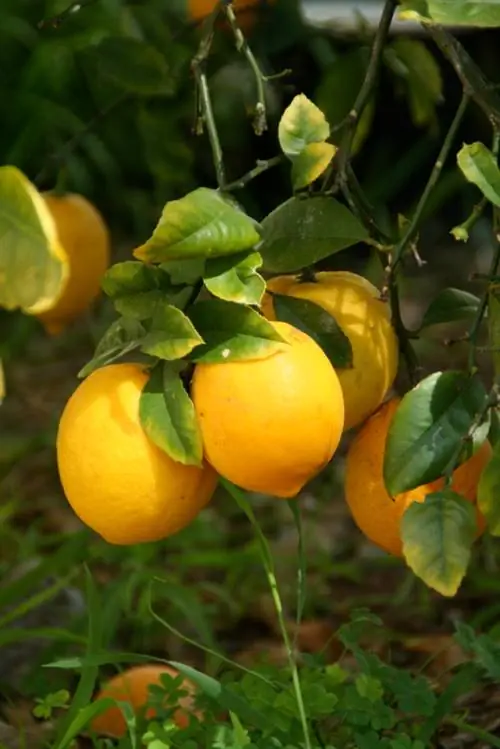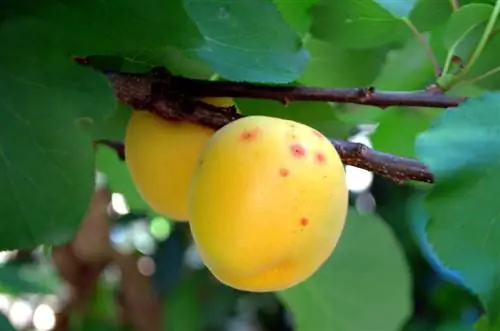- Author admin [email protected].
- Public 2024-01-10 23:11.
- Last modified 2025-01-23 11:22.
We are eagerly waiting for summer, for the bright orange fruits. The simple leaves, on the other hand, receive little attention. Without them, no sweet fruit is conceivable. Only when the green shows worrying symptoms do we take a closer look.
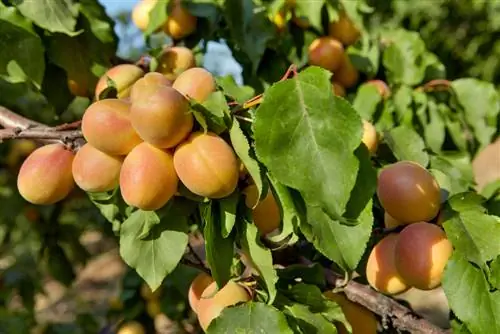
What do he althy apricot tree leaves look like?
He althy apricot tree leaves are medium green, rounded-ovoid, with a rounded base, pointed and double-serrated edges. They are 5-10 cm long and 3-5 cm wide with 2 to 4 cm long, reddish petioles.
He althy Leaves
He althy leaves should be the norm on the apricot tree. Then it develops to its full size and produces a rich harvest. Of course, only if the living conditions suit him and the weather cooperates.
The leaves of the apricot tree are not particularly noticeable. They have no particular decorative value, they just fulfill their function. They can be briefly described as follows:
- round-ovoid
- rounded base
- pointed
- Edges mostly double jagged
- about 5-10 cm long; 3-5 cm wide
- 2 to 4 cm long, reddish petiole
The coloring of the foliage
In summer, the leaves of the apricot tree are medium green in color, without any patterns. Since the tree is a deciduous tree, it turns its leaves yellow in autumn and then drops them.
In winter the tree stands in the garden with bare branches. The tree sprouts again early in the year. The tree is winter-hardy, but its flowers do not tolerate late frosts. That's why shading the tree often delays the time of sprouting.
Tip
He althy apricot leaves that fall to the ground in autumn can be swept up promptly and added to the compost heap.
Changes in appearance
Many diseases and pests can change the color and shape of the leaves. These obvious leaf changes are also the first thing that alerts us to the presence of a disease. This is how the different diseases change the leaves of an apricot tree:
- Bacterial burn: small spots on leaf edges; subsequent leaf dieback
- Powdery mildew: the top of the leaf is covered with white coating
- Curly disease: curled leaves with green and red blisters
- Monilia: Leaves wilt in spring
- Sooty mold: black, large spots on the tops of leaves
- Sharka: olive-colored rings on leaves; become black dots
- Scab: causes brownish, translucent spots
- Scrapshot disease: leaves are punctured
- Frost moth caterpillars: eat big holes in them
Note:Sick leaves should be picked up from the ground promptly and disposed of with residual waste or burned. This prevents the disease from spreading.



